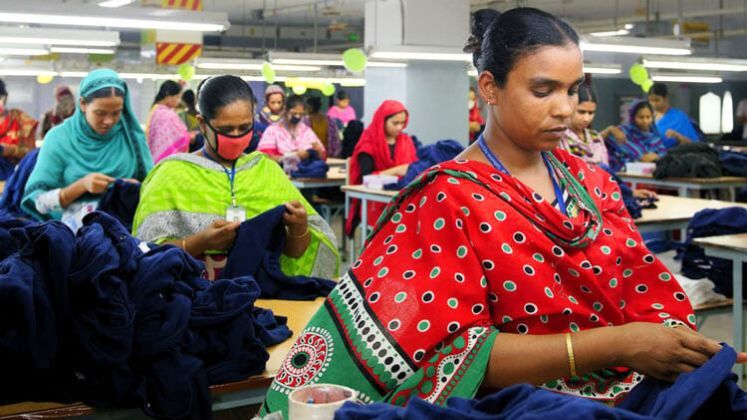
Bangladesh’s vital woven garment industry is under mounting pressure amid the ongoing US-China tariff conflict, with recent US-imposed tariffs and proposed trade restrictions threatening to disrupt the country’s exports to America. The US government, aiming to counter China’s economic influence, has targeted nations like Bangladesh that rely heavily on Chinese inputs for their manufacturing sectors.
In fiscal 2023-24, Bangladesh imported approximately US $ 16.63 billion worth of goods from China, representing 26.4% of its total imports. Over 80% of these imports consist of raw materials crucial to the garment sector, such as fabrics, chemicals, and accessories. Industry insiders warn that these dependencies make it difficult for Bangladesh to meet the US’s stringent Rules of Origin (RoO), which require 40% local value addition for products to qualify for American markets.
The woven garment sector, which mainly produces trousers, shirts, and other apparel for US consumers, is particularly vulnerable. Nearly 70% of the woven fabric used in these products is imported from China, making compliance with the new US demands nearly impossible. In the first 11 months of fiscal 2024-25, US imports of woven garments from Bangladesh reached US $ 4.62 billion, compared to US $ 2.4 billion for knitwear, which is less dependent on Chinese inputs due to local spinning capacity.
Industry leaders, including Masrur Reaz, chairman of the Policy Exchange think-tank, have expressed concern over the stringent and nearly unattainable value-addition targets. Mostafa Abid Khan, a former member of Bangladesh’s Trade and Tariff Commission, echoed these worries, emphasizing that higher US requirements could severely impact the woven sector’s competitiveness.
Bangladesh has attempted to mitigate the impact through diplomatic negotiations and offers of increased imports of American goods. The country has proposed purchasing more US LNG, agricultural products like cotton and soybeans, and increasing orders for Boeing aircraft to narrow the US $ 6 billion trade deficit with the US. However, progress remains uncertain as negotiations continue.
US officials have also pressed Bangladesh to align its tariff policies with American geopolitical interests, which challenges Bangladesh’s adherence to WTO principles of non-discrimination. There are fears that the US could apply broader tariffs or classify products as transshipped if they are rerouted from China through Bangladesh, adding further uncertainty.
Industry stakeholders are calling for urgent diplomatic engagement. Mahmud Hasan Khan, president of the Bangladesh Garment Manufacturers and Exporters Association, has requested the government to appoint lobbyist firms to facilitate direct talks with US officials. Meanwhile, industry leaders are also exploring ways to reduce Chinese dependency, such as sourcing fabrics locally or from alternative markets.
As the second round of negotiations is scheduled for July in Washington, Bangladesh’s garment sector faces an uncertain future. Experts highlight that while immediate measures are being taken, the country’s deep reliance on Chinese inputs poses a significant challenge to adapting swiftly to changing US trade policies. The outcome of these discussions will be critical for the future of Bangladesh’s woven garment exports to the United States.






